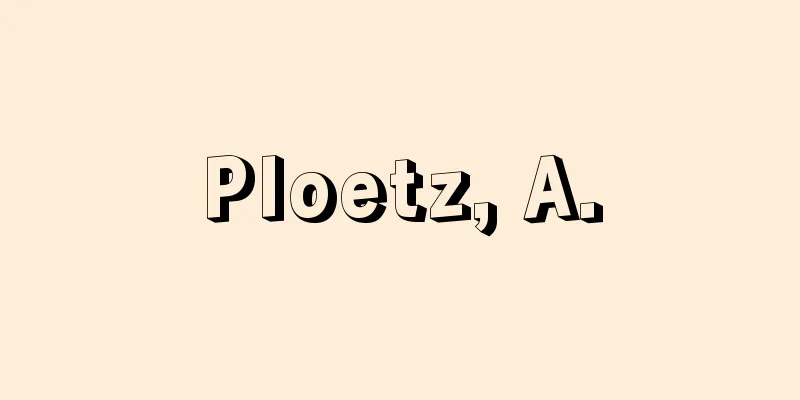Yoshio Farming

|
A Dutch interpreter and doctor of Western medicine in the mid-Edo period. Born in Nagasaki. His given name was Eisho, commonly known as Kozaemon and also Kosaku (Kosaku). Kogyu was his pen name. Born into a family of interpreters, he worked in the family business of Dutch interpretation from an early age, becoming a chief interpreter in 1748 (Kan'en 1), and by 1788 (Tenmei 8) he had served as chief interpreter eight times each year. Around 1790 (Kansei 2), he retired from his position as chief interpreter and became a Dutch interpreter inspector. After that, he was confined to his home and placed under house arrest for some trouble, but was pardoned in 1797, and thereafter served as an instructor of Barbarian studies. He also studied Western medicine, especially surgery, under the many foreign doctors who came to the Dutch trading post in Dejima, and later founded a school of surgery known as Yoshio-ryu surgery. He established 10 rules for the "Yoshio Family Learning" on the Red Hair Script, Red Hair Dialect, the Method of Silk Cloth, the Method of Pulse Cutting, the Method of Abdominal Diagnosis, the Method of Medication, the Method of Acupuncture, the Method of Wound Treatment, the Method of Ulcer Treatment, and the Method of Osteopathic Treatment, and instructed many students, including Sugita Genpaku, Maeno Ryotaku, and Hiraga Gennai, and made a great contribution to the spread of Dutch studies. The preface to "Kaitai Shinsho" (New Anatomy) was written by Kogyu. In addition to writing "Kaigan (Medical Guide to Red Hair Ulcers)" and "Gairo Hidenshu (Collection of External Therapeutic Secrets)," he dictated and published Japan's first urine diagnostic book, "In'etsu Hatsubi." [Otori Ranzaburo] [References] | | | | |Source: Shogakukan Encyclopedia Nipponica About Encyclopedia Nipponica Information | Legend |
|
江戸中期のオランダ通詞(つうじ)、蘭方(らんぽう)医。長崎の人。名は永章、通称は幸左衛門、また幸作(幸朔)。耕牛は号である。通詞の家に生まれ、早くから家業のオランダ通詞に携わり、1748年(寛延1)大通詞となり、1788年(天明8)までに年番大通詞を8回勤めた。1790年(寛政2)ごろ大通詞を退いてオランダ通詞目付となる。その後、不都合のことがあったとして閉門、蟄居(ちっきょ)に処せられたが、1797年に許され、以降、蛮学指南役の任にあった。一方、彼は出島のオランダ商館にきた多くの外国人医師について西洋医学、とくに外科を学び、のちに吉雄流外科といわれる一派をおこした。「吉雄家学之科条」として、紅毛文字・紅毛方言・纏帛(こんはく)法・切脈法・腹診法・服薬法・刺鍼(ししん)法・治創法・療瘍(りょうよう)法・整骨法の10か条を定め、杉田玄白・前野良沢(りょうたく)・平賀源内をはじめ多くの門下生を指導し、蘭学の普及に大きく貢献した。『解体新書』序文は耕牛の筆になる。『紅毛瘍(よう)医鑑』『外療秘伝集』などを著したほか、日本最初の尿診断書『因液発備』を口述、発刊した。 [大鳥蘭三郎] [参照項目] | | | | |出典 小学館 日本大百科全書(ニッポニカ)日本大百科全書(ニッポニカ)について 情報 | 凡例 |
<<: Falcated teal (English spelling)
Recommend
Peace Protection Law
When the "Cold War" that followed World ...
Kagetsu (Kagetsu) - Crassula portulacea; baby jade; cauliflower ears
A succulent plant of the Crassulaceae family. It i...
Leather dyeing - Kawazome
...In addition, there was a method of surimon, in...
Matsuo Takagaki
1890-1940 An American literature scholar from the...
urban renewal
...Redevelopment is carried out in a new form wit...
East Indian lotus
…[Hiroshi Aramata]. … *Some of the terminology th...
Mr. Choja - Uji no Choja
The leader or head of a clan. Before the Nara per...
Electromagnetic wave absorber
It is a device designed to absorb all the energy o...
Smell (smell) - Smell (English spelling)
A sensation caused by the sense of smell. Usually,...
Harivarman
…Abbreviated as “Joron.” Written by Harivarman (2...
Somanāhapura (English spelling)
…A medieval city in the state of Karnataka, South...
Walker, T.
...guitar), Robert Johnson (1912?-38, guitar), a ...
Araneae
...There are various local names such as Kubo, Ko...
Catacia - Catacia
...The climate was generally warm, with the Angar...
Sue [village] - Sue
A village in Kuma District, southeastern Kumamoto ...









